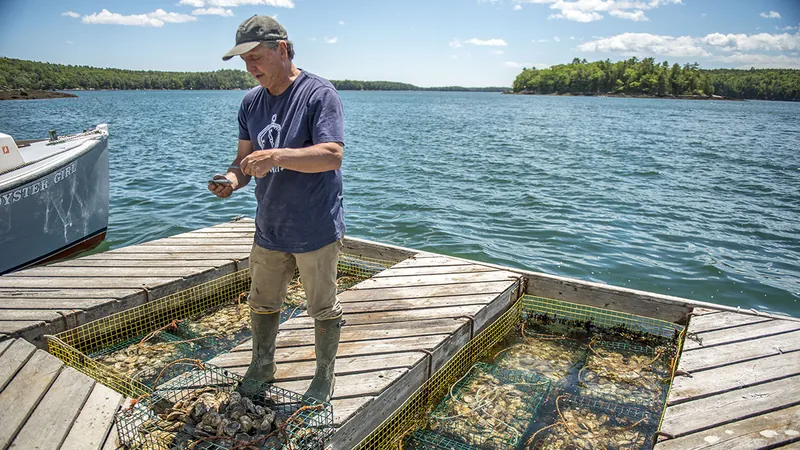
Gulf of Maine: A Temporary Shield Against Ocean Acidification
2025-07-03
Author: William
Rising Threats in the Gulf of Maine
As atmospheric carbon dioxide levels soar, the Gulf of Maine faces a daunting threat: ocean acidification. This unique marine region, known for its cold waters, is particularly susceptible because cold water absorbs carbon dioxide more effectively than warmer waters. With rising CO2 levels, the ocean's pH decreases, creating a more acidic environment that jeopardizes both delicate ecosystems and the vital shellfish industry.
Unveiling the Mystery of Acidic Waters
Understanding the chemistry of seawater is no simple task—it requires sophisticated equipment and an analysis of intricate physical and biological processes. Until recently, a lack of long-term data rendered it challenging to discern the trends in water acidity in this region.
However, a groundbreaking study has emerged, utilizing nearly a century's worth of ocean chemistry data preserved in algae, revealing a surprising delay in the onset of acidification in the Gulf of Maine.
Posh Algae: The Unsung Heroes of Ocean Data
Meet the crustose coralline algae, nature's timekeepers, thriving along the Gulf's coastline. These hardy organisms can live for about 40 years and grow in seasonal layers, similar to tree rings, making them excellent indicators of historical seawater carbon dioxide levels.
Researchers collected these algae samples from various locations and pieced together a timeline stretching from 1920 to 2018, uncovering a notable trend of maintained pH levels despite rising acidity, hinting at the Gulf's unique chemistry.
Unexpected Results: The Hopeful Trend
The researchers found that surface seawater pH in the Gulf averaged around 7.9, with a modest increase over the past 40 years. This upswing juxtaposes the global trend of rising acidification and raises eyebrows among scientists. What’s the secret behind this unexpected resilience?
The turning point appears to be a sharp increase in water temperatures starting around 2010, driven by a shift from colder northern waters to warmer, alkaline Gulf Stream currents. These changes may be temporarily buffering the region against acidification.
A Looming Crisis Ahead
But the question remains—how long can this protective buffer last? While the Gulf of Maine benefits from warmer, alkaline waters now, researchers warn that this reprieve is likely temporary. Increased atmospheric CO2 will inevitably impact the local ecosystems and economy, putting commercial fisheries at risk.
With pressures from warming waters, habitat degradation, and invasive species already threatening marine life, the added burden of acidification could push vulnerable species beyond their limits, reshaping the entire ecosystem.
Towards a Deeper Understanding
Researchers argue that combating acidity is not just about monitoring pH levels—it's a delicate balance of various factors including temperature and nutrient levels. Michèle LaVigne, an ocean scientist, emphasizes the importance of gathering comprehensive data to navigate these complex dynamics.
In summary, while the Gulf of Maine currently benefits from a temporary buffering against acidification, the ongoing vigilance and study are crucial to prepare for the challenges ahead.









 Brasil (PT)
Brasil (PT)
 Canada (EN)
Canada (EN)
 Chile (ES)
Chile (ES)
 Česko (CS)
Česko (CS)
 대한민국 (KO)
대한민국 (KO)
 España (ES)
España (ES)
 France (FR)
France (FR)
 Hong Kong (EN)
Hong Kong (EN)
 Italia (IT)
Italia (IT)
 日本 (JA)
日本 (JA)
 Magyarország (HU)
Magyarország (HU)
 Norge (NO)
Norge (NO)
 Polska (PL)
Polska (PL)
 Schweiz (DE)
Schweiz (DE)
 Singapore (EN)
Singapore (EN)
 Sverige (SV)
Sverige (SV)
 Suomi (FI)
Suomi (FI)
 Türkiye (TR)
Türkiye (TR)
 الإمارات العربية المتحدة (AR)
الإمارات العربية المتحدة (AR)